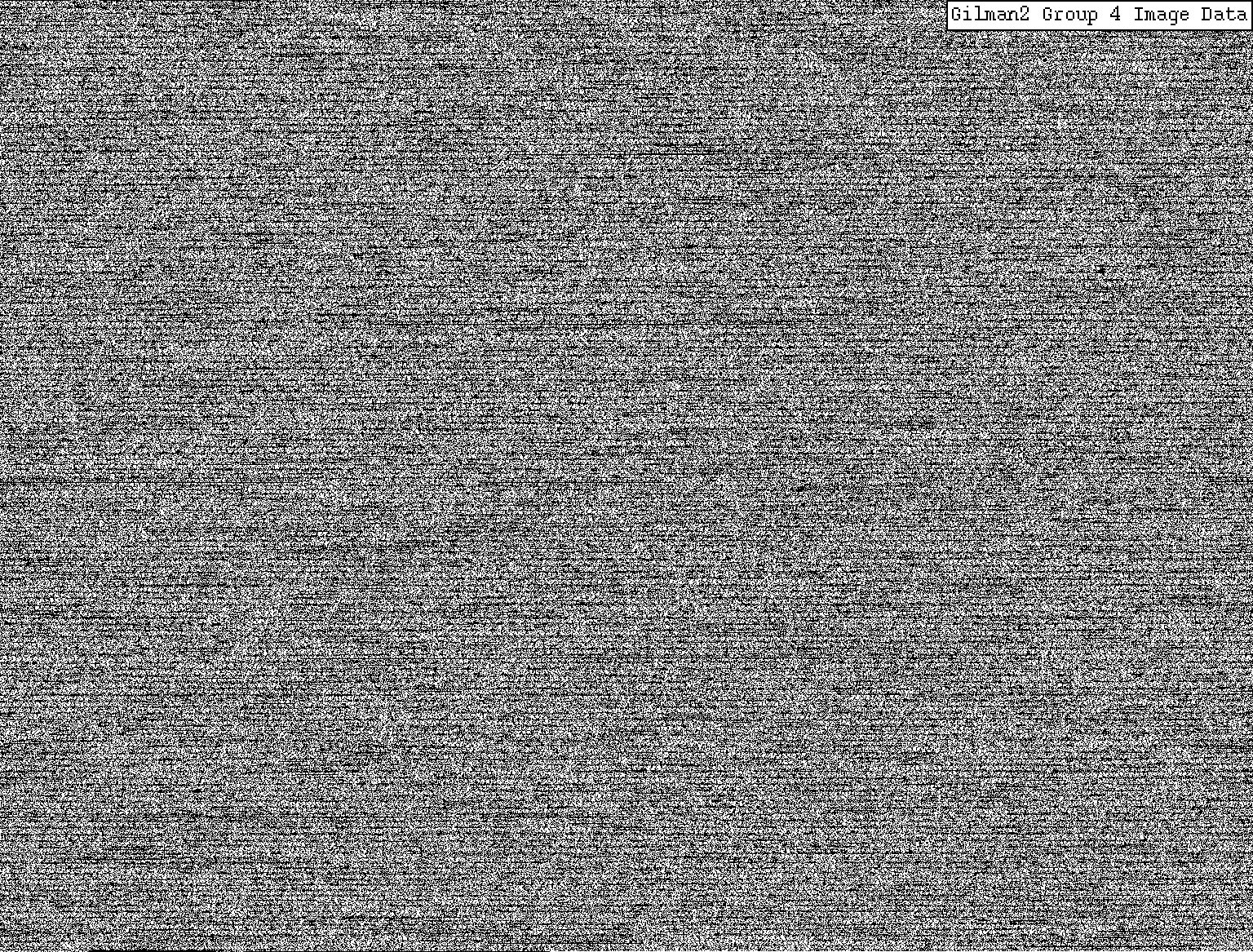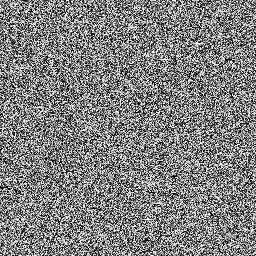Image noise
When noise is defined as the deterioration of a digital or electronically captured image by disorders that have no relation to the actual image content, the image signal. The interfering pixels differ in color and brightness of those of the actual image. The signal -to-noise ratio is a measure of the amount of noise. The appearance of the image noise is not directly comparable with the so-called " grain " in photography on analogue film, however, has similar effects on the technical image quality, especially the detail resolution. In some images, the image noise is also used for artistic design.
Causes of the noise
In electronic image sensors such as CCD and CMOS sensors is the noise to a great extent dark noise; It thus occurs without light incident on the sensor. Reason for this noise is on the one hand, the dark current of individual photosensitive elements (pixels), on the other hand, the readout noise amplifier ( readout noise ). When individual pixels with particularly high dark current (caused by manufacturing inaccuracies or defects in the image sensor ) is called hot pixels. With appropriate post-processing methods of this unwanted effect can be suppressed. Since the dark current from pixel to pixel is different, these variations can be eliminated by subtraction of a dark image; so that the dark noise is reduced. The electronics, which is followed by the image sensor, it can also be a source of additional shares of the dark noise.
In addition to the dark noise, there are also (usually smaller ) portions of the image noise, depending on the amount of light received. This includes the shot noise caused by the random distribution of the number of photons incident in one pixel, and small random fluctuations in the light sensitivity of the pixels ( also frequently called " photon noise" ).
The noise in an image sensor is noticeable at higher ISO sensitivities to light. Image noise is also influenced by the pixel size and the pixel pitch of the image sensor. The smaller the distance between the individual pixels ( here: photodiodes ) are an image sensor and the smaller the pixel size, the fewer photons ( light) can accommodate the individual pixels, and that means more noise and more noise in the image sensor. This is also called the distance of the pixel or photodiode pixel pitch of an image sensor. In practice, this means that the more pixels for example, has an APS - C size image sensor, the larger the image noise compared to other APS -C size sensors with fewer pixels, because more pixels also means also a smaller pixel pitch and a smaller pixel size the individual photodiodes on the image sensor. See advice at pixel pitch. However, these statements speak only as on a comparison of the images at 100 % on-screen display, ie with different output sizes. The images will instead be treated in the same issue size, the noise performance of the same size and type of the sensor is largely independent of the pixel size and the pixel pitch.
Some cameras such as the Fujifilm FinePix X10 have an EXR CMOS sensor. With the EXR technology 2 pixels can be connected together in low light conditions, also called binning. This will indeed halves the resolution, but in return increases the effective pixel size or the effective pixel pitch, whereby the noise is reduced by about a third.
For digital cameras, the brightness values into digital values ( integers ) are converted. In this process the so-called quantization noise arises because the continuous signals from the image sensor are converted into discrete values.
Classification of the noise
Pure noise is given when no image information is present. The accompanying pictures give examples of two-dimensional pure color noise ( chrominance ) and pure luminance noise ( luminance ) with a typical power spectral density distribution in which the signal amplitudes decrease with a 1/f-Charakteristik ( 1/f-noise ).
Chrominance ( color noise ) is given when independent random signals are present in the color channels of a digital image.
Besides the described pixel noise occurs in many digital cameras, a further random noise pattern with very low frequency (very low frequency noise), which is particularly noticeable in homogeneous areas in the middle and light areas in the form of cloudy color pattern disturbing.
Influences on the noise
The size of the image noise depends primarily on the quality of the digital camera. Decisive influence the size of the individual pixels. With the same image resolution, a small sensor generally has a higher noise than a large sensor with a lower packing density. Furthermore, the quality of the analog signal processing and analog - to-digital conversion as well as the ISO sensitivity have the greatest impact on image quality.
- Impact of the ISO setting in a digital SLR camera
ISO 200
ISO 400
ISO 800
ISO 1600
ISO 3200
While sensor technology and signal processing are determined by the camera, different recording parameters can be at least partially influenced by the photographer, primarily the ISO setting ( " film speed "). An increase in the " sensitivity " means an amplification of the signals of the receiving sensor, wherein the disorders are also amplified in the same way.
Clearly visible is the image noise in uniform, especially in dark or blue image areas. Underexposed, later on the computer brightened Static noise stronger than correctly exposed images in general.
Furthermore, the noise increases with increasing temperature sensor. Cameras and for displaying the viewfinder image use the image sensor ( " Live Preview " ) and are operated in this mode, rushing usually stronger than normal digital SLR cameras that activate the sensor only for the actual creation and thereby heat up less, assuming the same sensor technology. To prevent heating, increasingly active pixel sensors are used, which are characterized by a lower power consumption than CCD sensors.
Likewise, the noise increases with increasing exposure time, particularly when shooting at night or other situations with very long exposure increases the risk of the occurrence of hot pixels. Most digital cameras, however, offer to produce for long exposures by an immediately subsequent to the actual recording dark exposure, a reference image, the noise is subtracted.
Another cause of disturbances Pixel errors that occur more frequently, the smaller the pixels are, and can also be caused by cosmic radiation (for example, during transport or use of image sensors with airplanes or spaceships ) the beyond.
A method for noise suppression
Disturbing noise can be reduced by various noise suppression methods. In most processes, however, the photographer takes sacrificing other quality characteristics (eg sharpness or contrast range ) of a photograph in purchasing.
The following methods are commonly used:
- Camera mounted suppression of image noise: During the storage of photography, special algorithms are used which minimize the noise. See noise filter.
- Use of sensors with low packing density (for example, in digital SLRs )
- Exposure to the "right side of the histogram ." Here, the image is exposed in such a way that the subject is imaged as bright as possible. The vulnerable dark areas are shunned Assuming a " constant " noise level of the sensor thus. It is important to avoid of course, that image-related parts are overexposed (this is red, green, blue for individual color channels ).
- Image processing programs: A special function in some image editing programs, but also specifically specialized exclusively on denoising programs allow the reduction of the image noise. The advantage of a processing according to the actual recording is that the user can optimize the noise reduction itself, adapted to the recording. Also, you can get as the original file.
Dark noise can also be reduced by cooling the sensor, but this has so far been used only with cameras for astronomical and scientific purposes as well as for technical applications such as IR and thermal imaging cameras.










